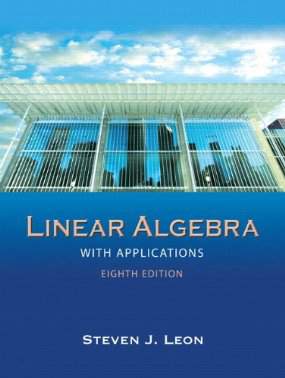Connecting...

This is a quick preview of the lesson. For full access, please Log In or Sign up.
For more information, please see full course syllabus of Linear Algebra
For more information, please see full course syllabus of Linear Algebra
Linear Algebra Coordinates of a Vector
Lecture Description
This is a short video that talks about relating the basis to a vector form. Thinking of a basis, we know that each vector is multiplied by a constant. In linear algebra we can take those constants and form a vector out of them. This vector is called the coordinate vector, and this vector has some special properties that are unique to it. Again, a rather short video, but an important one to pay attention to nonetheless; go along with the professor and work through the examples he introduces to get some good practice in to really grasp this concept.
Bookmark & Share
Embed
Share this knowledge with your friends!
Copy & Paste this embed code into your website’s HTML
Please ensure that your website editor is in text mode when you paste the code.(In Wordpress, the mode button is on the top right corner.)
×
Since this lesson is not free, only the preview will appear on your website.
- - Allow users to view the embedded video in full-size.
Next Lecture
Previous Lecture










































 Answer Engine
Answer Engine




1 answer
Wed Dec 18, 2019 6:43 AM
Post by George Watson on December 17, 2019
This lecture is very confusing.
You should not start out with theory but rather a simple example using a vector in R2.
When you change screens, all the information is lost and it is very difficult to know what
your goal is and what your starting point is.
You need to re-video tape the whole lecture over again and make it simple and clear at
first then make it more complicated.
Stay away from any space larger than R3, when do undergrads use R4/R5 ?
Make sure they understand up to R3 and then let them worry about higher dimensions.
0 answers
Post by Burhan Akram on November 12, 2013
Fascinating!!